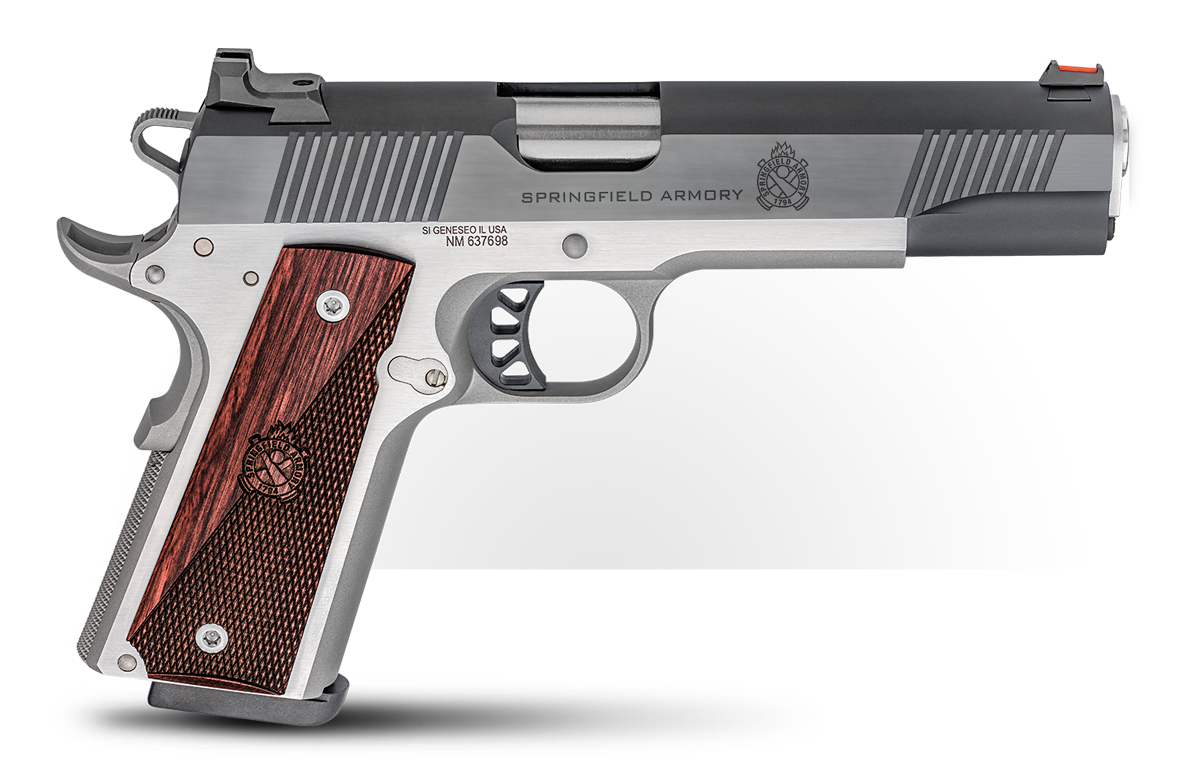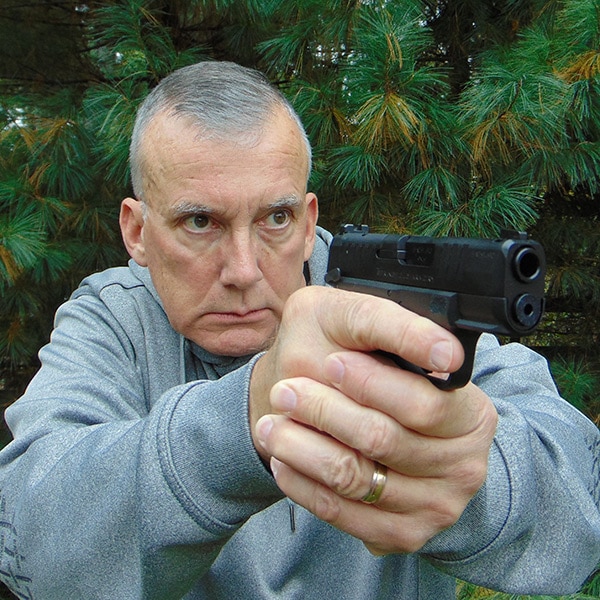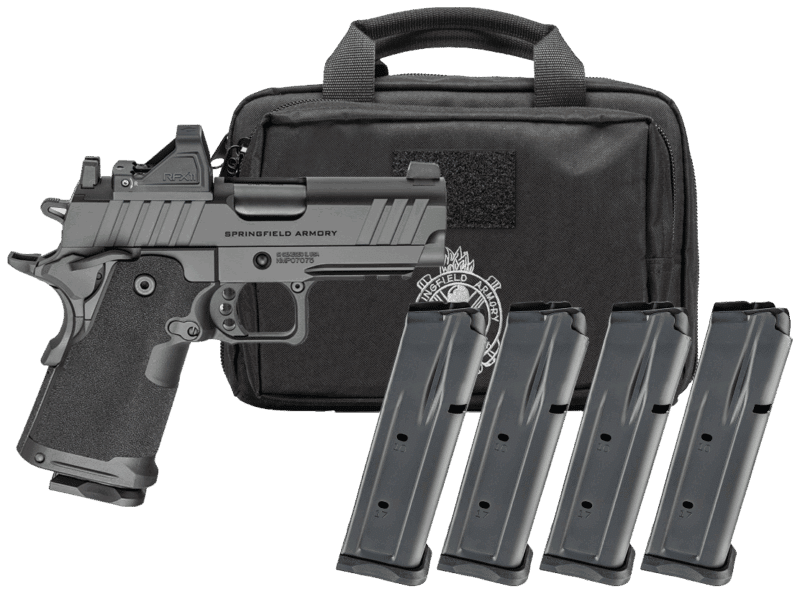10mm vs. 9mm — Revisiting the Handgun Cartridge Debate
October 19th, 2023
8 minute read
Which is better: the 9mm or the 10mm? In this article, Scott Wagner compares the two cartridges in an effort to make some determination in which offers superior stopping power and ballistics. Which would you select?
If you are considering getting a 9mm or a 10mm, you might wonder if the single millimeter difference matters that much. For those of you who haven’t any experience with the 10mm, the answer is a resounding YES — combined with a resounding NO. That’s because the question being asked is somewhat of a trick one.

I don’t expect most of you to realize that. After all, the 10mm isn’t exactly a household word among the average handgun shooter, much less to those who are brand new to defensive or sport shooting.
Caliber Comparison Background: 9mm vs. 10mm
The 9mm Luger cartridge entered the shooting world more than 100 years ago. Since that time, 9mm handguns have become nearly ubiquitous in the firearms world. The cartridge’s stopping power and ballistics have been much debated. By comparison, the 10mm round is a newcomer when matched up against the 9mm Parabellum.

The 10mm, or more properly the 10mm Auto, is a semi-automatic pistol cartridge tied to the late, great, Colonel Jeff Cooper, who was known as the father of the Modern Technique of handgun shooting. Col. Cooper was the biggest advocate of the .45 ACP cartridge and the 1911 pistol who ever lived, and part of the reason that the 1911 is still as immensely popular as it is more than a century after its introduction.
[Looking for another good caliber debate? Check out our 10mm vs. .40 article.]
As much as Colonel Cooper loved the .45 and the 1911, he felt there was room for some new options. He wanted a new cartridge that could have the same ballistic performance at 50 yards that the .45 ACP had at 25. The 10mm Auto was the result, and was introduced in 1983. But the history of the 10mm is loaded with fits and starts.

The handgun that the Colonel worked to have the 10mm chambered for — the Bren Ten — failed not because it wasn’t a decent handgun, but because of supply chain problems. People don’t want expensive handguns that don’t come with a magazine. The 10mm Auto went essentially nowhere at its launch.
10mm Auto Now
These days, the 10mm has been seeing quite the renaissance. Every time one thinks the 10mm is doomed, shooters start taking an interest in it again, and companies start making new guns, or reintroducing old ones chambered for the 10.
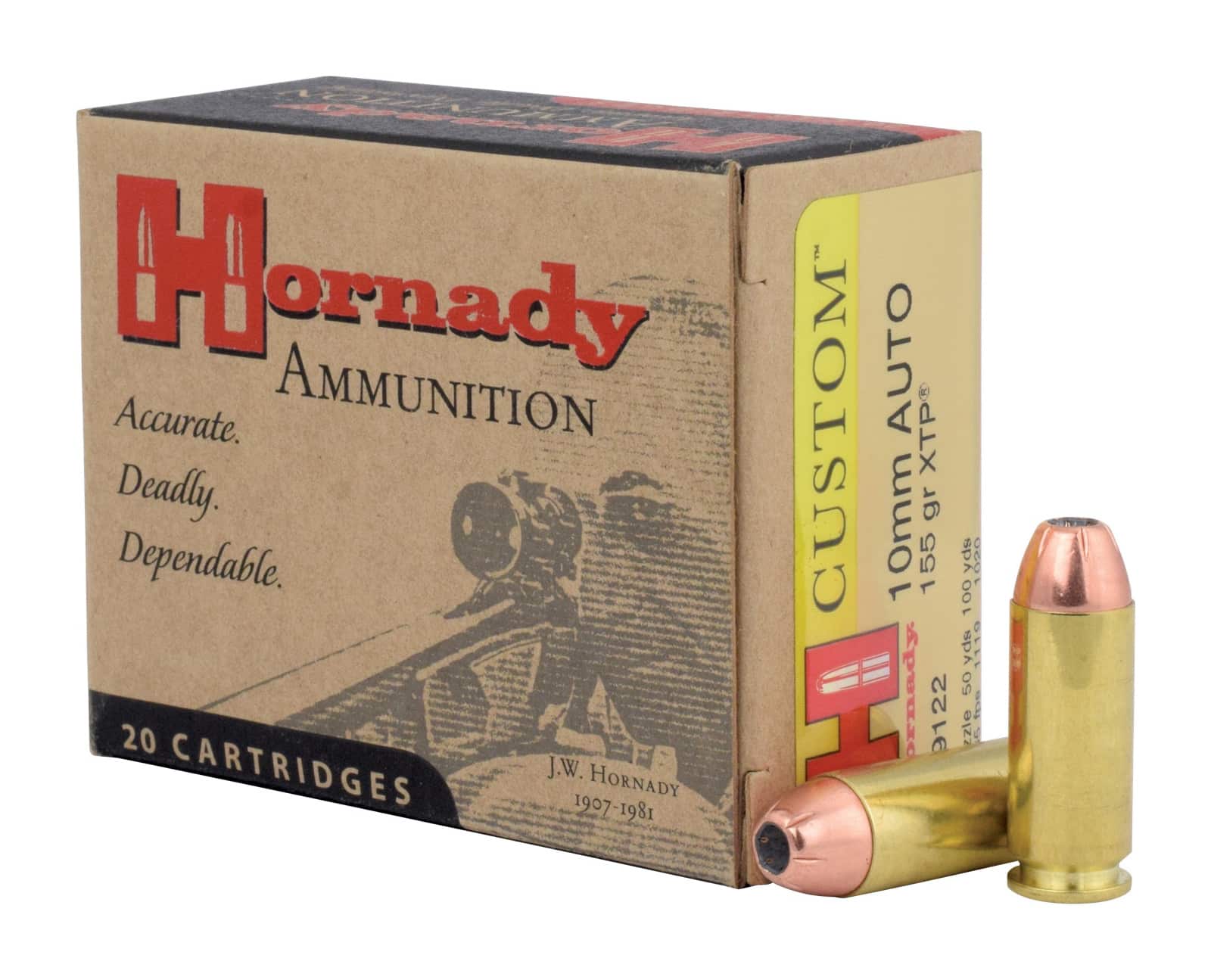
For example, Springfield Armory alone currently lists seven pistols in 10mm:
- Full-size Ronin 1911
- XD-M Elite Compact with 3.8” Barrel and HEX Dragonfly RDS
- XD-M Elite Compact with 3.8” Barrel
- XD-M Elite 4.5” Barrel with HEX Dragonfly RDS
- XD-M Elite with 4.5 “Barrel
- Desert FDE XD-M Elite with 4.5” Barrel
- Magpul OD Green XD-M Elite with 4.5” Barrel
That’s a pretty healthy lineup for a pistol caliber that has never had the obvious popularity of the .45 ACP or the 9mm. Many other manufacturers also have relatively new offerings in that caliber available as well.
That Trick Question…
In comparing the 9mm to the 10mm, it’s not just the question of the difference of one millimeter of diameter between the two handgun rounds. If that were the sole difference, and the “tale of the tape” was truly only a matter of bullet diameter, then the answer to the question would be “no”. The extra millimeter of diameter difference between the 9mm and 10mm would have no significant difference in effectiveness if everything else like velocity and bullet weight was equal. Since the differences in bullet weight and velocity of the 9mm vs. the 10mm is notable, the difference in power between these two rounds is extremely pronounced.
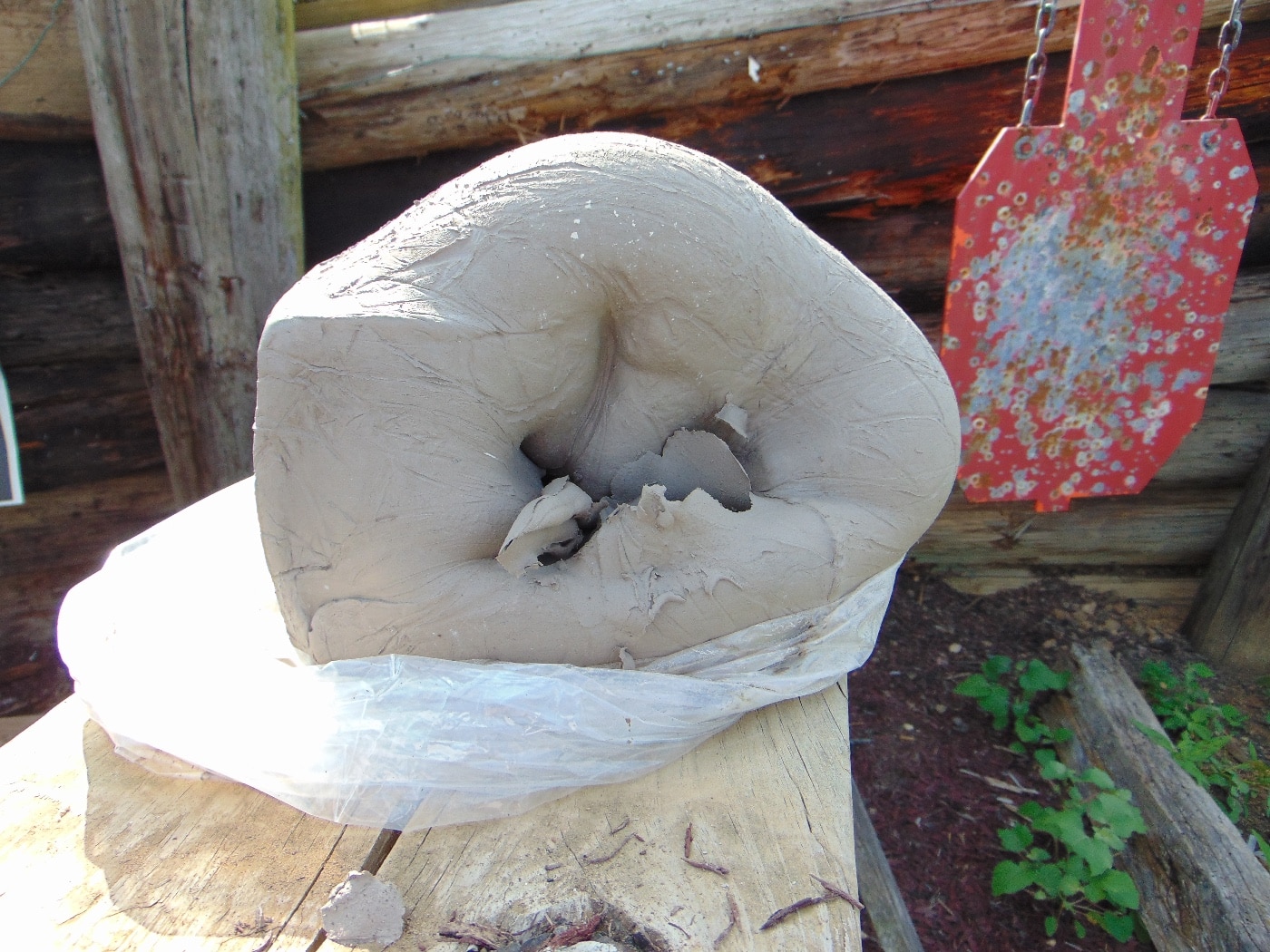
The 10mm Auto is quite the powerhouse. Most full power loadings, depending on bullet weight, generate anywhere between 526 to 680 FPE at the muzzle — which is pretty close to milder .41 Magnum factory load range.
Let’s compare the cartridge case dimensions first:
| Dimension | 9mm | 10mm |
| Bullet Diameter | 9mm (.355 inch) | 10.17mm (.400 inch) |
| Case Length | 19.5mm | 25.20mm (.992 inch) |
| Case Capacity | 13.30 grains H20 | 24.1 grains H20 |
| Maximum PSI SAAMI | 35,000 PSI | 37,500 PSI |
For those who have not actually seen the two cartridges side by side, the 10mm has a much longer cartridge case, capable of holding more powder and being loaded to a higher pressure than the 9mm.
As you can see from the chart below, the range of bullet weights that the 10mm can deliver downrange thoroughly outclasses the 9mm. The 10mm is an extremely capable and accurate round. While you CAN defend against large animals with a 9mm if that is all you have, keep your fingers crossed. But if you like to travel the backcountry, then consider upgrading to a 10mm pistol — both for defense against violent people or dangerous animals in the wild.
| Cartridge | Lowest Bullet Weight | Highest Bullet Weight | Optimal Standard Weight | Weight Range |
| 9mm | 50 grains (Liberty Civil Defense) | 150 grains (Federal HST Micro) | 124 grains | 97 grains |
| 10mm | 60 grains (Liberty Civil Defense) | 220 grains (Buffalo Bore) | 170-180 grains | 140 grains |
There are three areas where the 9mm still beats the 10mm — magazine capacity (but not by as much as previously), ammo cost, and recoil. In fact, the Springfield XD-M Elite OSP 4.5” 10mm boasts a 16+1 capacity.
Cost per round is the second area where the 9mm has the edge over the 10mm. For example, the 200-gr. Federal HST Ammo used for testing for this report has an MSRP of $50.99 for 20 rounds. The Federal HST 124-gr. 9mm has an MSRP of $37.99 for 20 rounds. While the larger size of the 10mm case provides superior ballistic potential over the 9mm, it also provides an increase in cost-per-round.

Lower recoil is another area where the 9mm bests the 10mm. While you get all sorts of ballistic advantages from the 10mm Auto cartridge, you must pay for those advantages with increased recoil. The 10mm is a harder cartridge to handle, especially when you get up to the 200+ grain bullet weights.
Despite the 10mm’s greater recoil energy, I have never found that it was a difficult round to shoot in full-size pistols, particularly with loads like the 175-gr. Winchester Silvertip (one of my all-time favorites) or 180-gr. FMJ practice ammo. I carried a 1911 chambered in 10mm on duty for a while during my time as a sergeant with the Village of Baltimore, Ohio, stoked with Winchester Silvertips. I also used that 10mm to demonstrate 100-yard handgun shooting to my academy cadets.
Testing the 9mm and 10mm
It was time to do an apples-to-apples comparison between the 9mm and 10mm using Hobby Lobby clay blocks. I would be testing the 9mm using the stainless Garrison 1911 from Springfield, using Federal’s 124-gr. 9mm HST load, with a listed muzzle velocity of 1,150 FPS, and 364 FPE at the muzzle. For the 10mm, I would be using Federal’s HST 10mm load with 200-gr. bullet traveling at 1,130 FPS — with a much more significant 567 FPE, fired from Springfield’s Ronin 1911.
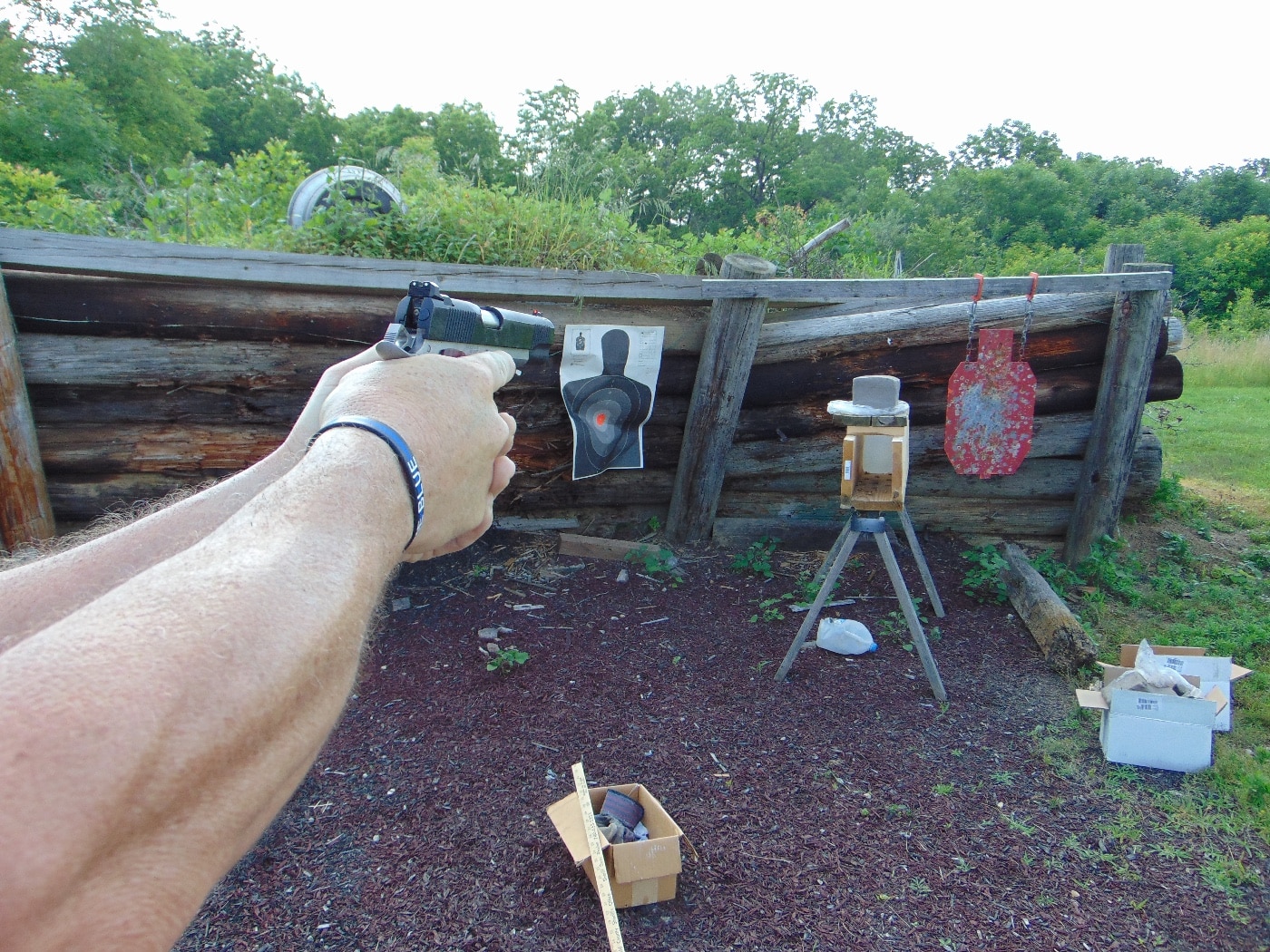
When I removed the Ronin test gun from the case for the first time to check that it was clear, I noticed what was the biggest, non-visual difference between it and the Garrison pistols — the stronger recoil spring.
A much stronger recoil spring is needed on the 1911 Ronin because of what we have been talking about — the greater power of the 10mm cartridge. If the recoil spring wasn’t stout, shooting it would start battering the frame in short order — maybe even cracking it. However, for the average shooter, the increased effort to manipulate the slide should pose no problem.
We did the clay block test at my friend Bret’s house. The results were quite surprising, yet explainable.

We shot the first clay block with the 9mm Garrison and the 124-gr. HST load. The HST entered the center of the block and blew not only a third of the front of it back towards me, but it also blew most of the entire top off. There was no sectioning needed. You are seeing the block exactly as it appeared after impact. The entire cavity was unlike anything I had ever seen. If you zoom in on the photo, you will notice that the cavity appears to be perfectly funnel-shaped, with a spiraling effect imprinted in the clay that rotates toward the narrowing center like a tornado. That spiraling also looks a bit like rifling in a pistol bore.
The bullet penetrated 10” into the clay, and remained in the block, pushing out a bump on the other side, but not exiting. That funnel-shaped cavity measured 7” (!) in diameter at the widest point. This is absolutely amazing performance! I later recovered the perfectly expanded slug, whose diameter had increased to 1” at the widest point.

The next round was the 10mm 200-gr. HST. The hit surprised me a bit. It entered in the center and greatly expanded the top of the block into a curve. It also expanded the right side of the block into the same curve. Clay from the front was sucked into the block instead of blown outward. The interior cavity measured only 5” at its widest point, and the 10mm slug exited the rear. Why?
It is simply not possible for a heavier slug traveling the same velocity as a lighter one to expand at the same rate. If there was a 124-grain HST, or even a 135-gr. one, we would see results at least as amazing as with the 9mm hit, and perhaps even greater. It’s like comparing the damage caused by a Mustang hitting a brick wall at 60 mph and an F250 truck hitting it. However, that 10mm slug is certainly more up to a wider variety of defensive tasks than the lighter 9mm in my opinion. Further, part of the 10mm’s energy was used up outside the block rather than in it.
9mm vs. 10mm — Conclusion
So, hopefully, I’ve explained my “yes” and “no” response at the start of the article. In truth, both cartridges have their own respective niche. I personally think the 10mm is the more versatile. Who knows? But the 9mm might be a better fit for you. And, isn’t it great we have the option of both?
Editor’s Note: Please be sure to check out The Armory Life Forum, where you can comment about our daily articles, as well as just talk guns and gear. Click the “Go To Forum Thread” link below to jump in!
Join the Discussion
Featured in this article
Continue Reading
Did you enjoy this article?

 392
392




